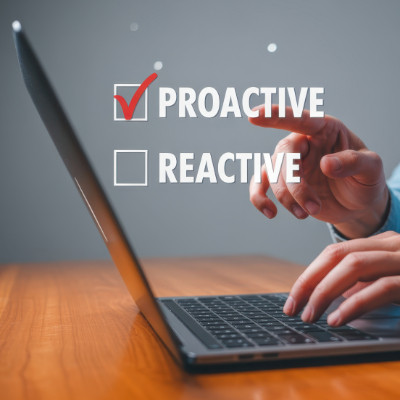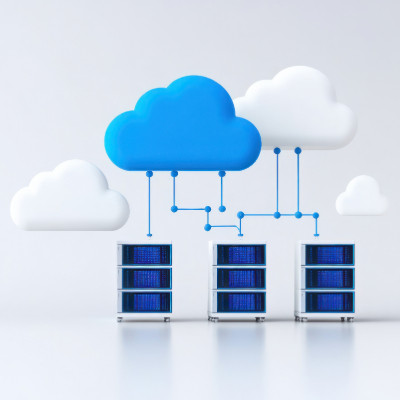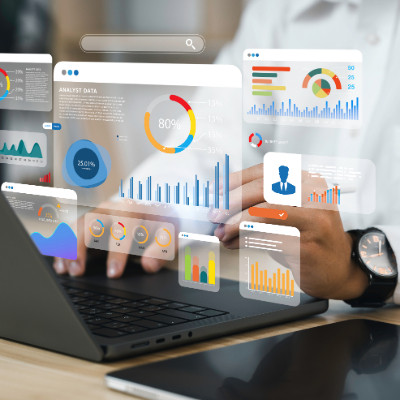If your business’ technology seems to be a-okay, the thought of updating it may seem unnecessary. This is decidedly not the case. Updates are what keep your business functioning (and therefore, profitable), while every skipped update opens you up to vulnerabilities, bugs, and much more severe consequences when you experience a true threat.
Global Tech Solutions Blog
Updates are critical for the continued utility and security of any computer system or program. That said, updates aren’t always perfect. It’s possible that even a routine update could sideline your critical applications. If this happens, you’re dealing with downtime and failing to serve your customers… all because you were trying to do the right thing and maintain your technology.
Make no mistake: updates are crucial, so to make sure they don’t disrupt your business, they need to be approached with strategy and discipline.
Having trouble diagnosing issues with your computer? It could be the operating system, or it could be a piece of software you installed on it, OR it could be a driver or another peripheral connected to it. How do you know what the issue is, and how do you address it? That’s where Safe Mode comes in; you can boot your operating system in its most basic form, allowing your managed service provider to more easily determine the problem.
When it comes to your technology, can you honestly say you have a plan? Or do you just pick things up that you think you need without a second thought? If your business doesn’t take technology acquisitions seriously, you’re setting yourself up for failure—and that’s where an IT roadmap presents a ton of value.
Wi-Fi is everywhere, and only when it’s not available (and you’re in a location where you cannot get cell service) do we realize just how much of a luxury it is to have a solid connection. You can give your team the solid wireless connection it deserves by carefully selecting where you place your organization’s router. Here are a few tips you can consider when placing your office’s wireless router.
Business technology can often put business owners in a tough spot. There are dozens of options out there in terms of hardware and software alike, each promising earth-shattering changes… many with an equally earth-shattering price tag.
This presents a significant dilemma for business owners. While the goal is to innovate and empower their teams, it can seem like many of these tools are simply not worth the investment, but at the same time, denying access feels like denying innovation.
The solution to this dilemma, however, is fortunately simple: leaning on data to inform your decisions and enable yourself to say the dreaded two-letter word: “no.”
You probably want a certain onboarding experience for any new hires: meeting the team, getting their computer set up, setting up all necessary accounts, and going through any necessary training. In reality, you’re likely going to spend most of that time ensuring secure access to all necessary resources, and until they get into the swing of things, they’ll feel a little awkward and out of the loop rather than a part of the team. Here’s how you can build a better onboarding process to make sure this doesn’t happen.
When considering the strengths of shapes, the triangle is generally considered the strongest, its three vertices creating the optimally stable configuration. The same can be said of your business’ approach to cybersecurity. The difference is that, instead of three equal legs working together to support whoever is seated on a stool, your business’ cybersecurity relies on equal investment in three key areas: your people, your processes, and your technology.
Let’s talk about how this holistic approach puts your business in the best position to stay secure, and where many organizations fall short.
Some surprises can be lots of fun. That said, any surprise impacts to your business’ IT won’t be.
Whether a server crashes, your wireless connectivity goes kaput, or you’re suddenly dealing with a security threat, the outcome is likely the same: the problem is fixed, but the invoice delivered to you a week or so later introduces a brand-new issue… the bill.
Nowadays, there is no reason for this little scenario to happen. Instead, your IT can be treated as a predictable utility cost without any dramatic surprises to throw off your plans.
I’m sure you have some idea of what you’d want any new hire’s first day to be like. They’re welcomed by the team, and brought to their workstation where everything is ready for them to get to business: all accounts are set up, the laptop works, and there’s a game plan for them to follow.
In reality, however, this first day is likely spent obtaining any available laptop and ensuring your new hire has the secure access they need. Meanwhile, the new team member feels increasingly like an outsider, rather than a contributor, as they jump through these hoops. Less appealing than the alternative, right?
Let’s discuss how crucial it is to get the onboarding experience right.
How many duties and responsibilities fall on you as a business owner? More often than not, you’ll find yourself wearing multiple hats, picking up the slack where you can because you just don’t have the time or the resources to hire staff for certain specialized tasks. Unfortunately, IT maintenance and management is one such role that falls to the wayside all too often—but it doesn’t have to.
Having a backup is always a smart idea, but it is essential to remember that there are different levels of backup that a business can implement. It’s one thing to be protected against a server crash; it’s quite another to be protected against a disaster that destroys your servers, as well as those of every business within a five-block radius. While local backups serve a purpose, they cannot be the only thing you rely on. Real resilience means looking elsewhere to achieve redundancy.
Implementing cool new technology solutions is fun and all… until you realize that there’s a lot of work involved in it. Your employees, for example, might even resist the change that it brings. How is your business going to address these challenges in a way that is productive for not just your employees, but for your entire organization? That’s what we want to discuss today.
Anyone that runs a business with employees knows just how important their sustained efforts are to the success of the endeavor. Unfortunately, not every person always puts in maximum effort or does things the way they’re intended to be done. This can be an issue for the bottom line. Today, we will be looking at the issue of time theft and what you can do about it.
AI is everywhere, helping us do everything from writing emails to analyzing data. It's a powerful tool that can make work more efficient, but it also comes with a hidden risk you should be aware of: prompt hacking.
This isn't some half-baked science fiction. As more businesses rely on AI, understanding prompt hacking isn't just a job for the IT department—it's something everyone needs to know.
Are you making the most of your business’ data? While it’s important to keep tabs on the actual numbers, it also helps to have a visual representation of what that data means so that others can easily understand it. Today, we want to look at five creative ways you can use interactive dashboards and data visualizations to show off your business to both external stakeholders and your staff.
It's a fact that computers generate heat. From the laptop fan whirring away on your desk to the massive arrays of servers powering cloud computing and AI, these machines require cooling to function optimally. As our reliance on the cloud expands, however, the sheer scale of this cooling requirement is transforming into a significant environmental and financial burden.
You might want to get as much life as possible out of your technology, but this is often counterproductive. While it might cost serious capital to invest in new computers and servers, even when your current equipment works “just fine,” there will come a day when “just fine” doesn’t cut it anymore. Your outdated hardware comes with all kinds of hidden costs that will slowly leech capital from your business and leave it worse off compared to if you just bought new tech.





















